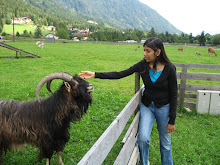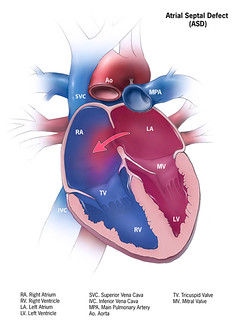The International Day of Yoga/Yoga for Warriors conference 2018 was held at the Gonzalez Convention Center in San Antonio on June 9. One of the highlights of the conference is the talk titled “The Science of Yoga” by Dr. Sat Bir S. Khalsa, Assistant Professor of Medicine at Harvard Medical School. A search for “yoga” in Pubmed will result in thousands of research articles and one need a good amount of time to browse them. Dr. Khalsa very neatly highlighted the research on yoga from 1955-2018. What an amazing talk! Had I heard his talk earlier in my life, I would have been a long-term yoga practitioner by now.
Before I go into the lecture, let us know few definitions.
What is yoga? The basic elements of yoga practice include physical postures, breathing, deep relaxation and meditation.
What is meditation? Meditation is focusing, losing and getting back the attention.
What is mindfulness? Mindfulness is nothing but awareness of one's body and mind.
Dr. Khalsa started with quotes of Sri Aurobindo and Yogi Bhajan. He also quoted Indian Prime Minister Modi's speech at United Nations General Assembly.
“...a methodised effort towards self-perfection by the expression of the secret potentialities latent in the being...a union of the human individual with the universal and transcendent existence...” -Sri Aurobindo.
“Yoga teaches you the techniques and awareness to stay healthy. You gain strong immune, glandular and nervous systems. This foundation gives you energy and lets you deal with the mental and spiritual facets of your life.” -Yogi Bhajan.
“Yoga is an invaluable gift of our ancient tradition. Yoga embodies unity of mind and body; thought and action; restraint and fulfillment; harmony between man and nature; a holistic approach to health and well being. It is not about exercise but to discover the sense of oneness with yourself, the world and the nature. By changing our lifestyle and creating consciousness, it can help us deal with climate change. Let us work towards adopting an International Yoga Day”.
-PM Modi at United Nations General Assembly, 2014.
Do you know that yoga practitioners in the United States have increased from 15.8 million in 2008 to 36.7 million in 2016?
Before going into the talk, Dr. Khalsa said the research on yoga is not about discovering but about re-discovering the Science of yoga.
He brought the scientific studies on yoga to light. Those include Neurological, Musculoskeletal and Molecular Biological studies. They were done at reputed institutes such as National Institute of Health, Harvard Medical School, Massachusetts General Hospital or University of California, Los Angeles.
Here is the summary of what I grasped from his lecture. For more details, please refer the research articles mentioned under "references".
Acknowledgement:
A person like me (with a scientific research background) or a middle school teacher, no matter what the background enjoyed his talk. Thanks to Dr. Nayak for inviting him to the IDY conference and thanks to Dr. Khalsa for accepting the request to give a talk to general audience.
References:
(1) Wenger MA, Bagchi BK, Electro-physiological correlates of some Yogi exercises. Electroencephalography and Clinical Neurophysiology, 7 (Suppl):132-149, 1957.
(2) Green E, Gren A. Beyond Biofeedback, Knoll Publishing Co. inc., 1977.
(3) Lundberg U. et.al. Stress management: A randomized study of cognitive behavioural therapy and yoga. Cognitive Behaviour Therapy, 35(1):3–10, 2006.
(4) Bernasconi C et. al. Reduced hypoxic ventilatory response with preserved blood oxygenation in yoga trainees and Himalayan Buddhist monks at altitude: evidence of a different adaptive strategy? Eur J Appl Physiol. 2007 Mar;99(5):511-8.
(5) Jensen JE et.al. Effects of yoga versus walking on mood, anxiety, and brain GABA levels: a randomized controlled MRS study. J Altern Complement Med. 2010 Nov;16(11):1145-52.
(6) Alavi A et.al. Cerebral blood flow differences between long-term meditators and non-meditators. Conscious Cogn. 2010 Dec;19(4):899-905.
(7) Barsalou LW et.al. Mind wandering and attention during focused meditation: a fine-grained temporal analysis of fluctuating cognitive states. Neuroimage. 2012 Jan 2;59(1):750-60.
(8) Bushnell MC et.al. Insular cortex mediates increased pain tolerance in yoga practitioners. Cereb Cortex. 2014 Oct;24(10):2732-40.
(9) Khalsa SBS et.al. Effects of a Kundalini Yoga program on elementary ans middle school students' stress, affect and Resilience. Journal of Developmental and Behavioral Pediatrics, 39:210-216, 2018.
(10) Lavretsky H et. al. Yogic meditation reverses NF-κB and IRF-related transcriptome dynamics in leukocytes of family dementia caregivers in a randomized controlled trial. Psychoneuroendocrinology. 2013 Mar;38(3):348-55 (11) Unterrainer HF et.al. The relationship between yoga involvement, mindfulness and psychological well-being. Complement Ther Med. 2016 Jun;26:123-7.
Before I go into the lecture, let us know few definitions.
What is yoga? The basic elements of yoga practice include physical postures, breathing, deep relaxation and meditation.
What is meditation? Meditation is focusing, losing and getting back the attention.
What is mindfulness? Mindfulness is nothing but awareness of one's body and mind.
Dr. Khalsa started with quotes of Sri Aurobindo and Yogi Bhajan. He also quoted Indian Prime Minister Modi's speech at United Nations General Assembly.
“...a methodised effort towards self-perfection by the expression of the secret potentialities latent in the being...a union of the human individual with the universal and transcendent existence...” -Sri Aurobindo.
“Yoga teaches you the techniques and awareness to stay healthy. You gain strong immune, glandular and nervous systems. This foundation gives you energy and lets you deal with the mental and spiritual facets of your life.” -Yogi Bhajan.
“Yoga is an invaluable gift of our ancient tradition. Yoga embodies unity of mind and body; thought and action; restraint and fulfillment; harmony between man and nature; a holistic approach to health and well being. It is not about exercise but to discover the sense of oneness with yourself, the world and the nature. By changing our lifestyle and creating consciousness, it can help us deal with climate change. Let us work towards adopting an International Yoga Day”.
-PM Modi at United Nations General Assembly, 2014.
Do you know that yoga practitioners in the United States have increased from 15.8 million in 2008 to 36.7 million in 2016?
Before going into the talk, Dr. Khalsa said the research on yoga is not about discovering but about re-discovering the Science of yoga.
He brought the scientific studies on yoga to light. Those include Neurological, Musculoskeletal and Molecular Biological studies. They were done at reputed institutes such as National Institute of Health, Harvard Medical School, Massachusetts General Hospital or University of California, Los Angeles.
Here is the summary of what I grasped from his lecture. For more details, please refer the research articles mentioned under "references".
- Physiologically yogic meditation represents deep relaxation of automatic nervous system. (1)
- Voluntary control of blood flow in the hand and voluntary control of heart was observed in a yogi. (2)
- Stress reduction with yoga. (3)
- Yoga (Pranayama) induces long-term changes in respiratory function and control. (4)
- Gamma-Aminobutyric acid (GABA) related activity is reduced in mood and anxiety disorders. The practice of yoga postures is associated with increased brain GABA levels resulting in improved mood and decrease anxiety. (5)
- The Cerebral blood flow in specific brain regions that are associated with emotion and autonomic function was significantly higher in long-term meditators compared to non-meditators (6)
- Reduction of Default Mode Network (DMN) activity. Brain regions associated with DMN is active during mind wandering. And Salience Network regions are active during awareness of mind wandering. (7)
- Regular and long-term yoga practice improves pain tolerance. (8)
- At the end of a yoga program for youth in a school, the perceived stress is significantly decreased while the resilience is significantly increased. (9)
- Practicing yoga of course is not going to change your genes but it can bring a change in the activity of genes by changing their up-regulation or down-regulation. (10)
- Highly involved yoga practitioners exhibited a significantly increased amount of mindfulness and spirituality and lower psychiatric symptoms such as depression. (11)
- Yoga has been shown to therapeutic for diabetes, cancer, mental health, lifestyle diseases (cardiovascular system disorders, insomnia), metabolic syndrome, endocrinology disorders. Search in Pubmed.
- Yoga for prevention of lifestyle diseases. Search in Pubmed.
Acknowledgement:
A person like me (with a scientific research background) or a middle school teacher, no matter what the background enjoyed his talk. Thanks to Dr. Nayak for inviting him to the IDY conference and thanks to Dr. Khalsa for accepting the request to give a talk to general audience.
References:
(1) Wenger MA, Bagchi BK, Electro-physiological correlates of some Yogi exercises. Electroencephalography and Clinical Neurophysiology, 7 (Suppl):132-149, 1957.
(2) Green E, Gren A. Beyond Biofeedback, Knoll Publishing Co. inc., 1977.
(3) Lundberg U. et.al. Stress management: A randomized study of cognitive behavioural therapy and yoga. Cognitive Behaviour Therapy, 35(1):3–10, 2006.
(4) Bernasconi C et. al. Reduced hypoxic ventilatory response with preserved blood oxygenation in yoga trainees and Himalayan Buddhist monks at altitude: evidence of a different adaptive strategy? Eur J Appl Physiol. 2007 Mar;99(5):511-8.
(5) Jensen JE et.al. Effects of yoga versus walking on mood, anxiety, and brain GABA levels: a randomized controlled MRS study. J Altern Complement Med. 2010 Nov;16(11):1145-52.
(6) Alavi A et.al. Cerebral blood flow differences between long-term meditators and non-meditators. Conscious Cogn. 2010 Dec;19(4):899-905.
(7) Barsalou LW et.al. Mind wandering and attention during focused meditation: a fine-grained temporal analysis of fluctuating cognitive states. Neuroimage. 2012 Jan 2;59(1):750-60.
(8) Bushnell MC et.al. Insular cortex mediates increased pain tolerance in yoga practitioners. Cereb Cortex. 2014 Oct;24(10):2732-40.
(9) Khalsa SBS et.al. Effects of a Kundalini Yoga program on elementary ans middle school students' stress, affect and Resilience. Journal of Developmental and Behavioral Pediatrics, 39:210-216, 2018.
(10) Lavretsky H et. al. Yogic meditation reverses NF-κB and IRF-related transcriptome dynamics in leukocytes of family dementia caregivers in a randomized controlled trial. Psychoneuroendocrinology. 2013 Mar;38(3):348-55 (11) Unterrainer HF et.al. The relationship between yoga involvement, mindfulness and psychological well-being. Complement Ther Med. 2016 Jun;26:123-7.

